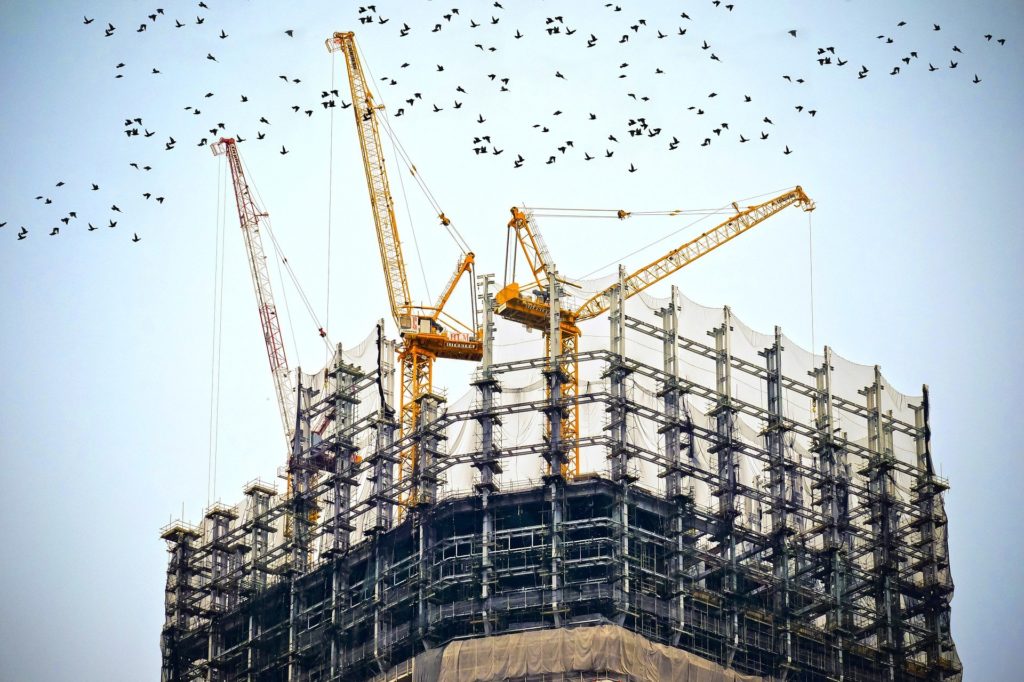Did you know that one in five workplace deaths are in the construction industry? Further, 47% of all fatal work injuries in 2018 were from construction accidents, according to the Bureau of Labor Statistics. According to OSHA (Occupational Safety and Health Administration), construction workers bear an enormous risk in their day-to-day roles, with one in ten sustaining an injury each year, including from crane accidents. To help mitigate these risks, there are standards and regulations in place that include safety training and regular machinery inspections and updates. However, crane-related accidents can still happen, particularly when heavy equipment is involved. It’s our job as personal injury attorneys to help determine the facts of a crane accident to see if it could have been avoided if an employer or third party had taken proper action in their use of cranes.
New York Department of Labor Regulations for Cranes
The state of New York tops the list with the number of fatal injuries involving cranes from the years 2011 to 2017, claiming the number two spot, behind only Texas and tied with Florida. In an effort to keep workers, site visitors, and bystanders safe at construction sites while avoiding a crane-related accident, the New York Department of Labor has a 13-page document outlining operations and safety provisions for all types of construction cranes in this work environment as each category from mobile cranes to derricks as well as tower cranes have different provisions. It’s important that workers and equipment operators are trained in safety measures, and it’s even more crucial that employers provide adequate equipment for the scope of the project while also ensuring workers are properly trained in all procedures, including job site protocol and equipment operations to avoid crane-related fatalities. Code Rule 23 includes crane provisions for the following:
- Strength and overall stability
- Routine inspections for all machinery and components
- Hoist braking functions and locks to regulate the speed
- Crane loads and load handling
- Hoisting the load
- Permitted modifications to equipment
- Cast iron limitations
- Protection from weather and other elements
- Reeving accessories and wire ropes
- Lubrication of critical and ancillary parts
- Operation in the vicinity of power lines as well as for concrete applications
There are also special provisions regarding inspection, load hoisting procedures, braking mechanisms, capacity, authorized operation, construction supervisors’ conduct, and more to reduce the potential causes of an accident or crane injury. The goal of this code is to make it abundantly clear what behavior is expected for crane operation to keep everyone at a construction site safe. Because crane accident cases can be complicated with multiple people at fault, Code 23 aims to outline who is responsible for crane injuries, including what the requirements are for crane operators. With 20% of all United States construction taking place in populous areas like NY City, Dallas, Houston, Los Angeles, and Washington, D.C., ensuring workplace safety at construction sites for construction laborers and residents is a critical mission.
Most Common Causes of Crane Accidents
OSHA reports that in 45% of crane-related accidents, contact with energized power lines was the major cause. Other common causes of crane accidents and injuries in the United States construction industry include:
- Under the hook lifting device (these are meant to improve crane safety for a worker but can cause an issue if their structure and use are not compliant with OSHA standards
- Dropped crane loads
- Overturned cranes and crane collapses
- Crane boom collapse
- Outrigger use
- Worker or bystander falls
- Rigging failures
- Crushing by counterweight
Often, but not always, human error is the culprit in a crane accident. If you or a loved one has been injured in one of these types of accidents or suffered a fatal crane accident, Halperin & Halperin, P.C. can help you determine who is at fault.
Why Crane Accidents Are So Serious
In construction, crane use is popular for projects because cranes give construction project managers the ability to move heavy loads cost-effectively. Their portability offers a high degree of flexibility. Plus, they can be set up relatively quickly, which can be a time-saver. On the flip side, these benefits can come with a cost. When an employer tries to complete a project speedily, they could decide to cut corners. For example, they might opt for a crane selection that’s not right for the content of the job, they might not do proper maintenance, or they could elect to save time on an install by overlooking a critical step. Perhaps the most dangerous violation and one of the most common causes of crane accidents is not training crane operators sufficiently or overlooking lax workplace standards for people on-site. The sheer weight of this equipment and the load cranes carry on a construction site causes a high-stakes situation, and can make even a minor mistake have severe consequences in the event of a crane accident, including fatalities. As you might imagine, in the case of a serious crane accident, workers’ compensation might not be enough to cover all of your injuries, especially, in the event of a crane collapse. Construction workers and the crane operator aren’t the only ones at risk for crane accidents. Often, a bystander is the one who pays the price for reckless behavior or negligence because they get struck by a falling object or crushed by a falling boom, sustaining a serious injury. Because this equipment is so heavy and takes a high degree of skill to master, this type of injury can be incredibly serious, and even result in fatalities. The cost of crane accidents are incredibly high, and if the injury is fatal, hospital costs can skyrocket, often reaching close to $1 million. There’s no doubt that construction companies can reduce this liability by investing in protocols, but when they fail to do so, it’s the victims that pay the price for crane accidents.
Injured in a Crane Accident?
Crane accidents are often serious and can have life-altering ramifications, especially if the injuries resulted in fatalities. If you or a loved one has been injured in a crane accident, the experienced team at Halperin & Halperin, P.C., can help. We have a long and successful track record of achieving six and seven-figure settlements for our clients, including cases regarding fatal crane accidents. Call us at (212) 935-2600 to schedule a free consultation with one of our attorneys. We will review your crane injury case during this no-obligation phone call and help you determine the most appropriate next steps.

